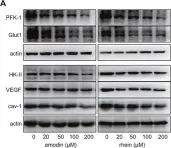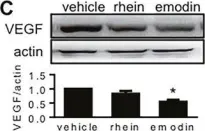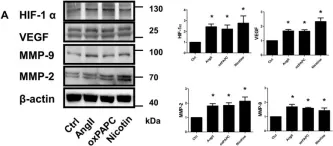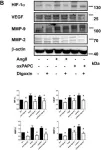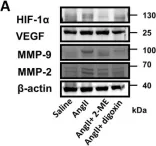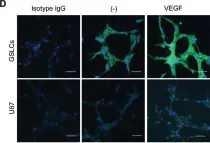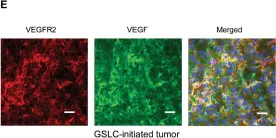In this randomized phase II study, we evaluated the efficacy and safety of sorafenib in combination with capecitabine and cisplatin (XP) as first-line chemotherapy in advanced gastric cancer.
Patients with metastatic gastric or gastroesophageal junction adenocarcinoma were randomized (1:1) to receive either sorafenib plus XP (S + XP) or XP alone. In cases of disease progression in the XP arm, crossover to sorafenib alone was allowed. The primary endpoint was progression-free survival (PFS). The secondary endpoints included overall survival (OS), response rates, safety profiles, and biomarkers, and the response rates and PFS with secondline sorafenib alone after progression in the XP arm.
Between Jan 2011 and Feb 2013, a total of 195 patients were accrued (97 in the S + XP arm and 98 in the XP alone arm). The overall response rate was 54% with S + XP, and 52% with XP alone (p = 0.83). With a median follow-up of 12.6 months (range, 0.1-29.2), the median PFS assessed by independent review was 5.6 months in the S + XP arm and 5.3 months in the XP arm (hazard ratio [HR] 0.92, 95% confidence interval [CI] 0.67-1.27, p = 0.61). Overall survival was not different between the two arms (median 11.7 vs. 10.8 months; HR 0.93, 95% CI 0.65-1.31, p = 0.66). Frequencies of grade 3/4 toxicities were similar between the S + XP and XP alone arms, except for neutropenia (21% vs. 37%), anorexia (0% vs. 5%), and hand-foot skin reaction (7% vs. 1%). Among 51 patients who crossed over to sorafenib alone after disease progression in the XP arm, there was no objective response and their median PFS was 1.3 months (95% CI, 1.2-1.7).
The addition of sorafenib to XP chemotherapy was safe but not more effective than XP alone for first-line treatment of metastatic gastric cancer.
© 2022 The Authors. Cancer Medicine published by John Wiley & Sons Ltd.
Product Citations: 26
In Cancer Medicine on 1 April 2023 by Ryu, M. H., Lee, K. H., et al.
-
IHC
-
Homo sapiens (Human)
-
Cancer Research
In BMC Cancer on 9 August 2022 by Liu, X., Jiang, M., et al.
Sodium selenite (SSE) has been reported to exert anti-tumor effects in several cancer cells. However, the underlying mechanisms in renal cancer are yet to be elucidated. The effects of SSE on the proliferation, metastasis, and apoptosis of renal cancer cells, as well as its mechanism, were investigated in this study.
ACHN and 786-O renal cancer cells were treated with different concentrations of SSE, MTT, and colony formation assays were used to detect the proliferation ability of cells. The migration of cells was detected using scratch-wound-healing and transwell-migration assays. The effect of SSE on apoptosis was assessed by AnnexinV-FITC/PI double staining. Besides, Western blotting was employed to detect the protein-expression level and elucidate the underlying pathways. We also made subcutaneous xenografts in athymic mice to verify the effect of SSE on tumor growth in vivo.
Our results demonstrated that treatment with SSE resulted in significant inhibition of cell proliferation and migration. Flow cytometry and Western blot confirmed that SSE induced apoptosis via the endogenous apoptotic pathway. We also confirmed that SSE treatment causes an increase in intracellular reactive oxygen species (ROS) levels, resulting in the inhibition of nuclear transcription factor-κB (NF-κB) signaling. Modulation of the ROS level by the chemical inhibitor N-acetyl-cysteine reversed the effect of SSE on cells. Similarly, subcutaneous xenografts in athymic mice models showed that SSE inhibits tumor growth in vivo.
These results indicate that SSE inhibits proliferation and migration and induces apoptosis via ROS mediated inhibition of NF-κB signaling in renal cancer cells.
© 2022. The Author(s).
-
WB
-
Cancer Research
In Molecular Therapy. Nucleic Acids on 8 March 2022 by Tsai, H. Y., Wang, J. C., et al.
Rupture of abdominal aortic aneurysms (AAAs) is one of the leading causes of sudden death in the elderly population. The osteogenic transcription factor runt-related gene (RUNX) encodes multifunctional mediators of intracellular signal transduction pathways in vascular remodeling and inflammation. We aimed to evaluate the roles of RUNX2 and its putative downstream target miR-424/322 in the modulation of several AAA progression-related key molecules, such as matrix metalloproteinases and vascular endothelial growth factor. In the GEO database, we found that male patients with AAAs had higher RUNX2 expression than did control patients. Several risk factors for aneurysm induced the overexpression of MMPs through RUNX2 transactivation, and this was dependent on Smad2/3 upregulation in human aortic smooth muscle cells. miR-424 was overexpressed through RUNX2 after angiotensin II (AngII) challenge. The administration of siRUNX2 and miR-424 mimics attenuated the activation of the Smad/RUNX2 axis and the overexpression of several AAA progression-related molecules in vitro. Compared to their littermates, miR-322 KO mice were susceptible to AngII-induced AAA, whereas the silencing of RUNX2 and the administration of exogenous miR-322 mimics ameliorated the AngII-induced AAA in ApoE KO mice. Overall, we established the roles of the Smad/RUNX2/miR-424/322 axis in AAA pathogenesis. We demonstrated the therapeutic potentials of miR-424/322 mimics and RUNX2 inhibitor for AAA progression.
© 2021 The Author(s).
-
WB
-
Biochemistry and Molecular biology
In The FASEB Journal on 1 November 2019 by Tsai, S. H., Huang, P. H., et al.
Acute mountain sickness (AMS) occurs in up to 25% of unacclimatized persons who ascend to 3000 m and can result in high-altitude pulmonary edema (HAPE). MicroRNAs (miRs) can regulate gene expression at the post-transcriptional level. Hypoxia selectively disrupts endothelial tight junction complexes through a hypoxia-inducible factor-1α (HIF-1α)-dependent mechanism. Though increased HIF-1α expression is associated with adaptation and protection from AMS development in the early stage of hypoxia, a downstream effector of HIF-1α, VEGF, can induce overzealous endothelial barrier dysfunction, increase vascular permeability, and ultimately result in HAPE and high-altitude cerebral edema. We hypothesized that the fine-tuning of downstream effectors by miRs is paramount for the preservation of endothelial barrier integrity and the prevention of vascular leakage. We found that several miRs were up-regulated in healthy volunteers who were subjected to a 3100-m height. By reviewing the literature and using online bioinformatics prediction software, we specifically selected miR-424 for further investigation because it can modulate both HIF-1α and VEGF. Hypoxia-induced miR-424 overexpression is HIF-1α dependent, and miR-424 stabilized HIF-1α, decreased VEGF expression, and promoted vascular endothelial cadherin phosphorylation. In addition, hypoxia resulted in endothelial barrier dysfunction with increased permeability; miR-424 thus attenuated hypoxia-induced endothelial cell senescence and apoptosis. miR-322 knockout mice were susceptible to hypoxia-induced pulmonary vascular leakage. miR-322 mimics improved hypoxia-induced pulmonary vascular leakage in vivo. We conclude that several miRs were up-regulated in healthy adult volunteers subjected to hypobaric hypoxemia. miR-424/322 could modulate the HIF-1α-VEGF axis and prevent hypoxia-induced pulmonary vascular leakage under hypoxic conditions.-Tsai, S.-H., Huang, P.-H., Tsai, H.-Y., Hsu, Y.-J., Chen, Y.-W., Wang, J.-C., Chen, Y.-H., Lin, S.-J. Roles of the hypoximir microRNA-424/322 in acute hypoxia and hypoxia-induced pulmonary vascular leakage.
-
Cardiovascular biology
In Oncotarget on 20 October 2017 by Hu, L., Cui, R., et al.
The transcription factor hypoxia-inducible factor-1 (HIF-1) consists of oxygen-sensitive HIF-1α and constitutive HIF-1β. HIF-1α is undetectable in normal cells, but cancer cells frequently express HIF-1α to support their growth, angiogenesis, and high glycolysis (also known as the Warburg effect). The Warburg effect in cancer cells increases energy expenditure and thus participates in cancer-induced metabolic disorder, cancer cachexia. In the present study, we investigated whether two components of Rheum palmatum, emodin and rhein, inhibited HIF-1α expression in human pancreatic cancer cells and whether the inhibiting effect, if any, attenuated cancer cachexia. Using Western blotting, we demonstrated that emodin and rhein decreased HIF-1α expression in MiaPaCa2 and four other human pancreatic cancer cell lines. We also examined HIF-1α expression when MiaPaCa2 cells were exposed to PX-478, noscapine, and phenethyl isothiocyanate, as these compounds were known to inhibit HIF-1α expression in different cancer cells. PX-478 and noscapine inhibited HIF-1α expression to a less extent than emodin and rhein, and phenethyl isothiocyanate did not inhibit HIF-1α expression in tested concentrations. We obtained evidence that emodin and rhein decreased HIF-1α by decreasing its biosynthesis but not gene transcription or protein stability. When MiaPaCa2 cells were implanted in athymic mice, emodin and rhein inhibited cancer-cell growth and HIF-1α expression. In these athymic mice, emodin and rhein also attenuated two pathological constituents of cancer cachexia, namely high hepatic gluconeogenesis and skeletal-muscle proteolysis. In conclusion, emodin and rhein decrease pancreatic cancer cell's growth and HIF-1α expression and attenuate cancer cachexia in the athymic mice carrying the cancer cells.
-
WB
-
Mus musculus (House mouse)
-
Cancer Research
In BMC Cancer on 9 August 2022 by Liu, X., Jiang, M., et al.
Fig.2.E

-
WB
-
Collected and cropped from BMC Cancer by CiteAb, provided under a CC-BY license
Image 1 of 10
In Oncotarget on 20 October 2017 by Hu, L., Cui, R., et al.
Fig.2.A

-
WB
-
Mus musculus (House mouse)
Collected and cropped from Oncotarget by CiteAb, provided under a CC-BY license
Image 1 of 10
In Oncotarget on 20 October 2017 by Hu, L., Cui, R., et al.
Fig.5.C

-
WB
-
Mus musculus (House mouse)
Collected and cropped from Oncotarget by CiteAb, provided under a CC-BY license
Image 1 of 10
In Sci Rep on 1 July 2016 by Tsai, S. H., Huang, P. H., et al.
Fig.1.A

-
WB
-
Collected and cropped from Sci Rep by CiteAb, provided under a CC-BY license
Image 1 of 10
In Sci Rep on 1 July 2016 by Tsai, S. H., Huang, P. H., et al.
Fig.1.B

-
WB
-
Collected and cropped from Sci Rep by CiteAb, provided under a CC-BY license
Image 1 of 10
In Sci Rep on 1 July 2016 by Tsai, S. H., Huang, P. H., et al.
Fig.3.A

-
WB
-
Collected and cropped from Sci Rep by CiteAb, provided under a CC-BY license
Image 1 of 10
In Sci Rep on 1 July 2016 by Tsai, S. H., Huang, P. H., et al.
Fig.3.B

-
WB
-
Collected and cropped from Sci Rep by CiteAb, provided under a CC-BY license
Image 1 of 10
In Sci Rep on 1 July 2016 by Tsai, S. H., Huang, P. H., et al.
Fig.5.A

-
WB
-
Collected and cropped from Sci Rep by CiteAb, provided under a CC-BY license
Image 1 of 10
In PLoS One on 29 March 2013 by Yao, X., Ping, Y., et al.
Fig.3.D

-
ICC-IF
-
Homo sapiens (Human)
Collected and cropped from PLoS One by CiteAb, provided under a CC-BY license
Image 1 of 10
In PLoS One on 29 March 2013 by Yao, X., Ping, Y., et al.
Fig.4.E

-
IHC-IF
-
Homo sapiens (Human)
Collected and cropped from PLoS One by CiteAb, provided under a CC-BY license
Image 1 of 10

